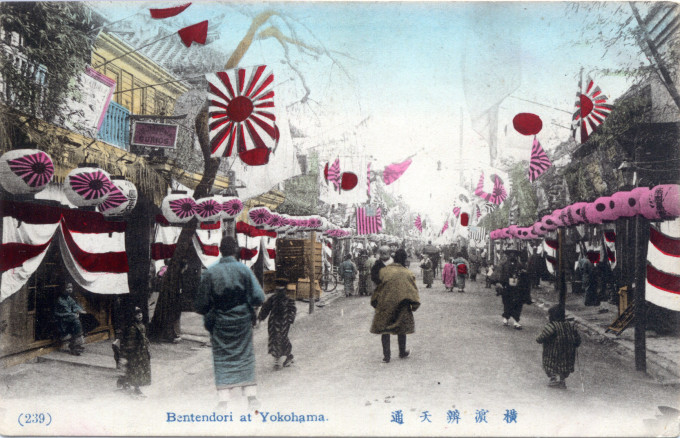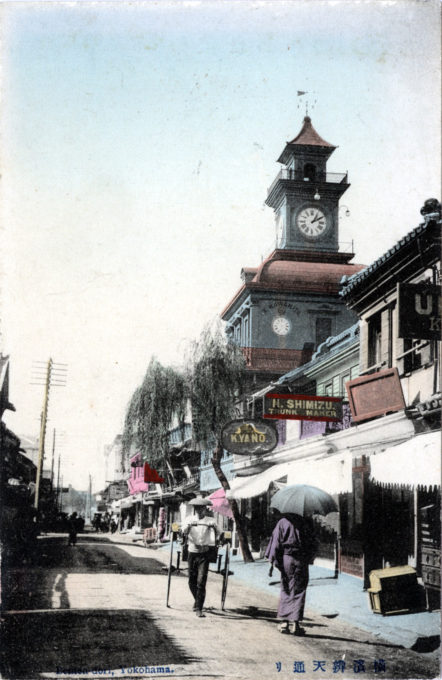“My first impressions of Yokohama are separable — and, indeed, must be separated — into two widely different classes: viz., on one side, those that relate to a European city of modern buildings, luxurious clubs, beautiful private residences half hidden in greenery, clean macadamized streets, and hotels where guests in evening dress eat their dinner to the music of a band; and, on the other side, those that relate to an Asiatic city of low, tile-roofed shops with signs in big white Japanese characters on blue cotton cloth.
“… Japanese women in dark kimonos and bright sashes, hobbling along on high wooden clogs with babies on their backs; bareheaded coolies in the dark-blue, white-barred uniform dress of the trade guilds; bare-legged jinrikisha-men in inverted bowl-shaped hats, trotting past with full-grown passengers in large-sized, two-wheeled baby-carriages; Chinamen, Hindus, and Japanese natives of all sorts, coming, going, chattering, laughing, and gathering in little groups to gaze at the highly colored pictures of the war displayed in front of some photographer’s shop or news-stand.”
– First Impressions of Japan, by George Keenan, The Outlook, June 11, 1904

Flag- and banner-draped Benten-dori, c. 1905, in celebration of the Japanese victory in the Russo-Japanese War.
See also:
Russo-Japanese War (1904-1905)
Samurai Shokai, Yokohama, c. 1910
“There are two streets in Yokohama known as Honcho-dori and Benten-dori, where the stranger will find an extensive collection of bricbrac, as well as other fine goods. It is amusing to examine the old spears, swords, daggers, bronzes, and astonishingly ugly carved idols. There are stores also devoted to lacquer, china, porcelain, and satsuma ware, not ancient, but choice, elegant and new patterns, far more desirable to our taste than the cracked and awkward specimens held at prices equal to their weight in gold.
“… The reason that so many swords and daggers are for sale, and at prices for which it would be impossible to manufacture them, is because the army has discarded the native weapons and adopted European arms.
“In these streets there are also some fine silk and lace stores, with many choice articles of ladies wear, embracing very fine specimens of native silk industry. The Japanese trader has got the trick of asking twice as much as he is willing finally to take for his goods, but there are also establishments where the one price system is honestly observed.”
– Due West: or Round the World in Ten Months, by Maturin Murray Ballou, 1893



Pingback: Isesaki-cho, Yokohama, c. 1930. | Old Tokyo